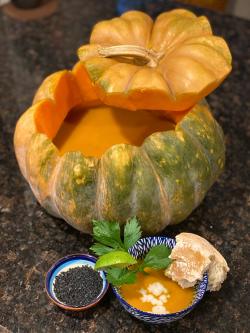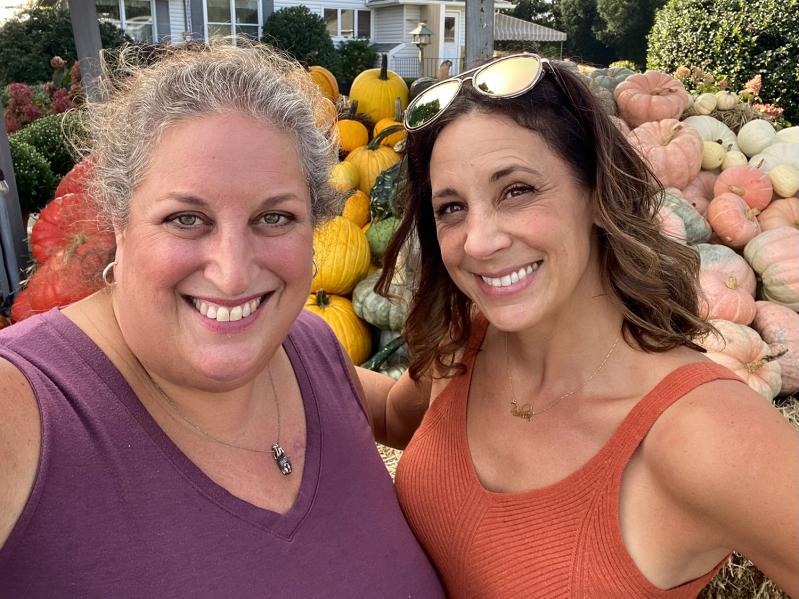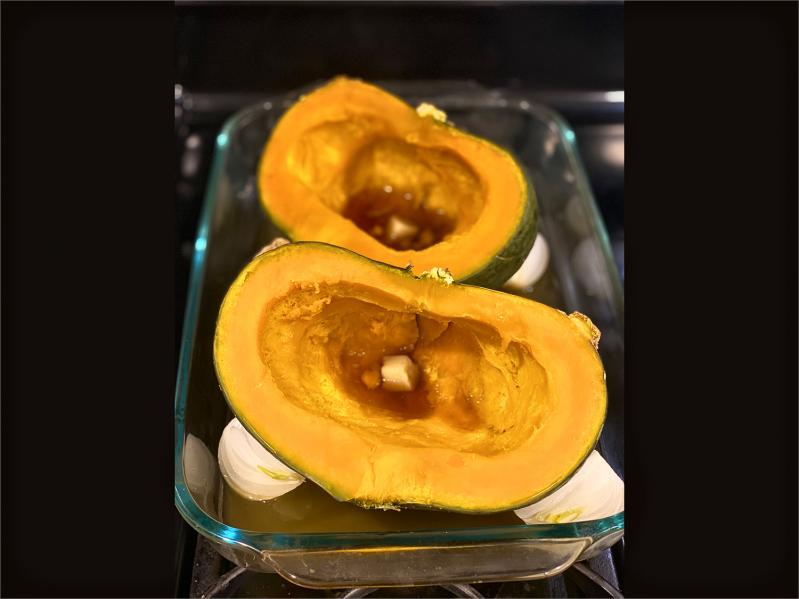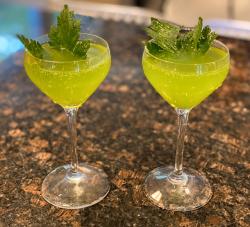Gone are the summer days filled with peaches, berries, corn, and tomatoes that actually smell like tomatoes. (Not sure if they do? Just smell the under end.) It’s time to embrace the chill in the air as winter vegetables return triumphantly to farm stands, heralding a season of hearty, wholesome delights.
The farm stand adventure begins as you embark on a treasure hunt amid mounds of ghoulish decorative gourds in fabulous colors, outlandish shapes, and warty skin characteristics, and squash of many kinds — short, long, curvy, round — in varying shades of green, beige, brown, yellow, and black, all the colors that every single home in the 1970s seemed to be inspired by. (Seriously though, why was everything brown back then?)
Anyway, go ahead and round up those especially ugly gourds to decorate your porches, tables, and mantels because although they are edible, cooking a gourd hybridized to be used for décor is a lot of work and probably not worth the trouble. And why bother when you can find a sea of squash (or is it squashes?) at your favorite farm stand to cook up on a brisk fall day? You can opt for the tried-and-true classics, like butternut, acorn, and spaghetti, but we’d like to encourage you to explore some less-familiar varieties.
At a recent visit to Andrews Family Farm in Calverton, we were introduced by one of our favorite farmers to the diminutive honey nut squash — the smaller, sweeter cousin of the butternut. After that, we wanted to delve into the deeper, darker world of squash and forgo the butternut-adjacent honey nut for an even less-known cousin. Enter the kabocha squash.
Kabocha is a variety of squash from Japan, often referred to as a Japanese pumpkin. It is short, squat, and ranges from orange to dark green. The taste crosses between a sweet potato and a pumpkin with a slightly sweet and earthy nut flavor profile. (Sidebar: “Earthy Nut” sounds like something our best friend occasionally calls us.) The health benefits of kabocha are enticing, with a hearty dose of vitamins A, B, and C to help ward off the sniffles. At only 34 calories per 3.5 ounces, this gluten-free cutie proves to be an outstanding fiber powerhouse. Take that, Metamucil!
But is it tasty? We can say with full confidence: yes. The squash is so popular that farm stands sell out of it quickly because those who know act fast. It’s the garlic scape of the fall. Since we love a recipe that lasts a few meals, soup is always a go-to. It takes minutes to reheat, is filling, and can easily feed a crowd. When tired, it’s a hug for the heart and a hearty dish to enjoy alongside fresh bread. Kabocha commingles beautifully with various spices and seasonings that suit your tastes.
As holiday plans begin to take shape and favorite recipes move to the forefront of our minds, take this time to indulge in a rich, velvety Thai kabocha squash soup, originally created by Pamela Salzman, a recipe developer and teacher of cooking classes. This recipe lets the oven and stovetop do the heavy lifting and is so easy it should remove the fear of trying something new.
Make the battle of opening the squash a breeze by microwaving it for three to four minutes to soften the skin, effortlessly allowing you to cut the squash in half and scoop away the seeds. Roast the kabocha for 90 minutes until it reaches golden perfection. Enjoy those extra 90 minutes of your life you’ve gained by crossing “make dinner” off your list, and brew a cup of tea while starting that new book you promised yourself you’d read. Or better yet, watch three episodes of “Two Jews Making Food,” of which there are 34 available for viewing, including the most recent, filmed ahead of this edition of The Star’s “Holiday Special.”
Once the timer rings, remove the pan and uncover it to cool. Place all remaining ingredients into a soup pot, scoop out the squash, and bring to a gentle boil. Purée soup with an immersion or standing blender. If you want to get fancy with it, you can carve a circle in the top of a medium, round pumpkin (we used a Cinderella), scrape out the innards, line it with aluminum foil (so you can reuse it as a jack-o’-lantern), and pour the soup in for a fun and festive terrine.
If you want a wintry cocktail to go along with your soup, you can try the kale green mimosa, which we found online at the food blog Bloody Mary Obsessed. We tweaked it with the addition of apple to give it some extra sweetness and liked it even more. Plus, it makes you feel like you are being at least a little bit healthy while imbibing. But if you don’t like drinking kale (and to be honest, who really does?), just have a nice glass of wine.
Recipes
1 cup kale
1 cup water
1⁄4 cup celery
1⁄4 cup sliced apples
(optional, for extra sweetness)
1 Tbsp. freshly grated ginger
1 Tbsp. fresh lemon juice
4 oz. Champagne, sparkling wine, or prosecco
Mix all the ingredients into a pint glass except
the champagne. Muddle this mixture for several
minutes, which will bring out the juices and flavors of the ingredients.
Strain the liquid champagne flutes. Top them with more champagne or sparkling wine and garnish with a celery leaf before serving.
 Thai Kabocha Squash Soup
Thai Kabocha Squash Soup
Makes about 8 cups, ideal for six servings.
One 3⁄4-lb. kabocha squash, washed, quartered, and seeds removed
1 onion, peeled and thinly sliced
1⁄2Tbsp. fresh, peeled ginger, thinly sliced
4 cups chicken or vegetable stock, preferably homemade, divided
2 Tbsp. red curry paste
1 tsp. sea salt (double this if your stock is unsalted) plus more to taste
3/4 cup full-fat coconut milk, plus more for finishing
2 limes, cut into thirds
A handful fresh cilantro or mint leaves, sliced
2 red chiles (either Thai or Fresno), sliced
Optional: 2 Tbsp. pure maple syrup, plus more to taste if you want a bit of sweetness
First, preheat your oven to 350 degrees.
The pieces of squash should be placed cut side up in a roasting pan. Divide slices of ginger and maple syrup evenly between the cavities of the squash. Surround the sides with onion slices, pour in 2 cups of stock, and cover tightly with foil. Bake 90 minutes or until the squash is very tender, then remove pan from the oven.
Allow the vegetables to cool slightly, or enough that you can touch them. Scoop out the pulp and transfer into a large soup pot. Discard the skins. Add in the onions, ginger if desired (note that this will add a stronger ginger flavor), and the cooking liquid from the pan.
Pour in the remaining 2 cups of stock, as well as the curry paste, sea salt, and coconut milk. Stir this well, then bring to a boil. Lower the heat and simmer, uncovered, for 10 minutes.
Purée until smooth in the pot with an immersion blender, or in a standard blender in batches. Taste for seasoning; add additional salt and/or maple syrup to taste.
Divide soup into bowls, then drizzle each with a tablespoon of coconut milk, a squeeze of lime, and the herbs and sliced red chiles.



